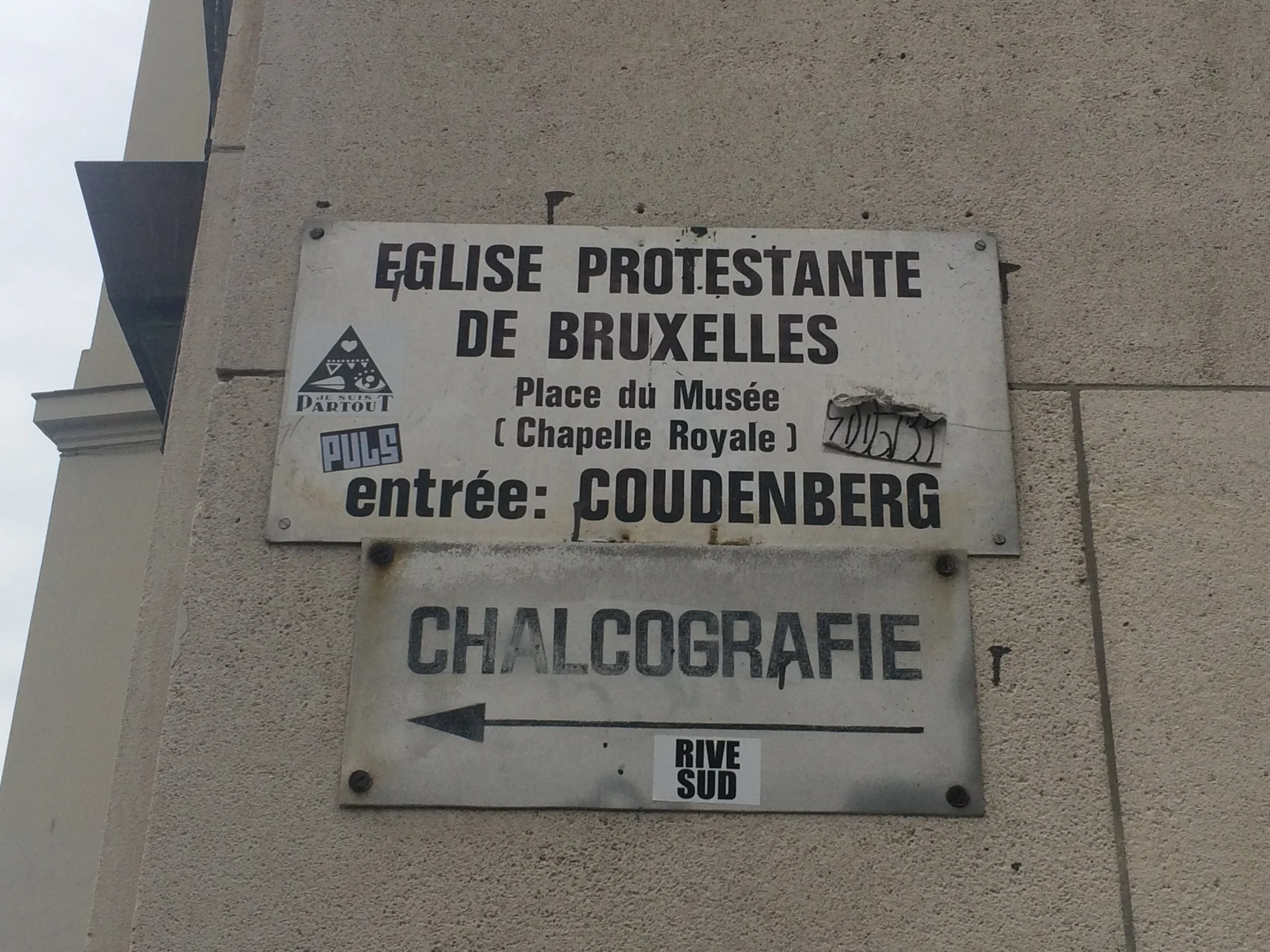Yeah, it is summertime! Time to take a break, visit places, meet old and new friends and enjoy the sun.
So last week we, a group of printmaking enthusiasts, decided to take a day off to visit the Chalcography department of the Royal Library of Belgium/KBR in Brussels, currently lead by talented illustrator and printmaker Leen Van Hulst. To be honest, before meeting Leen during the letterpress workshop in Antwerp earlier this year I had no idea about this department at all. So when she kindly suggested to visit it we immediately scheduled the appointment.
KBR keeps more than 9.000 ancient and modern engraved plates (wood and copper), collects all Belgian publications, preserve, manage and studies more than 8 million documents. The library has a history that goes back to the age of the Dukes of Burgundy. In the second half of the 20th century, a new building was constructed on the Mont des Arts in Brussels city center, near the Central Station.
"Chalcography" is a term taken from the Greek "chalkos", copper, and "graphia", to write. These are engravings on copper plates used for printmaking and illustrations in the production of books.


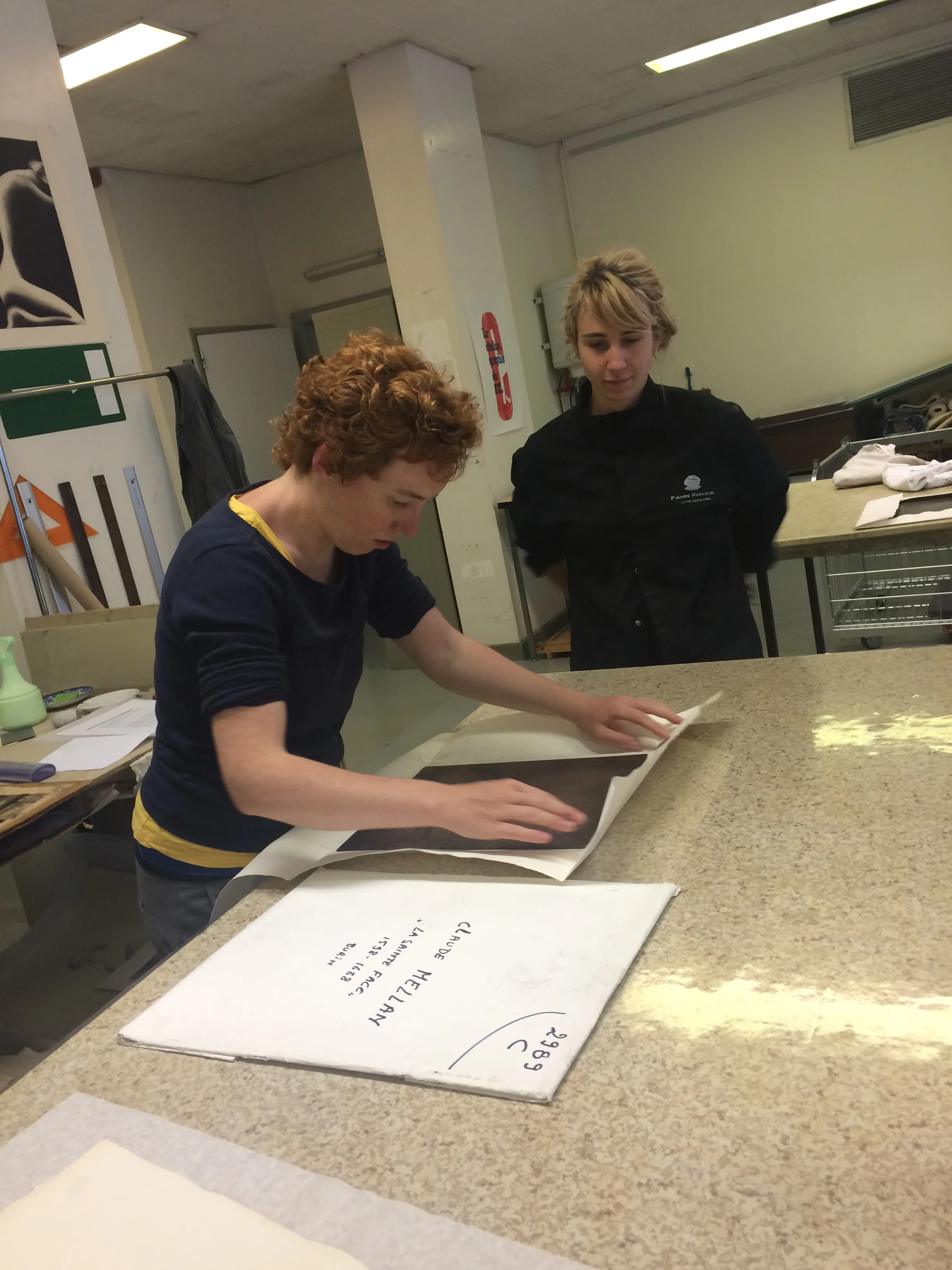
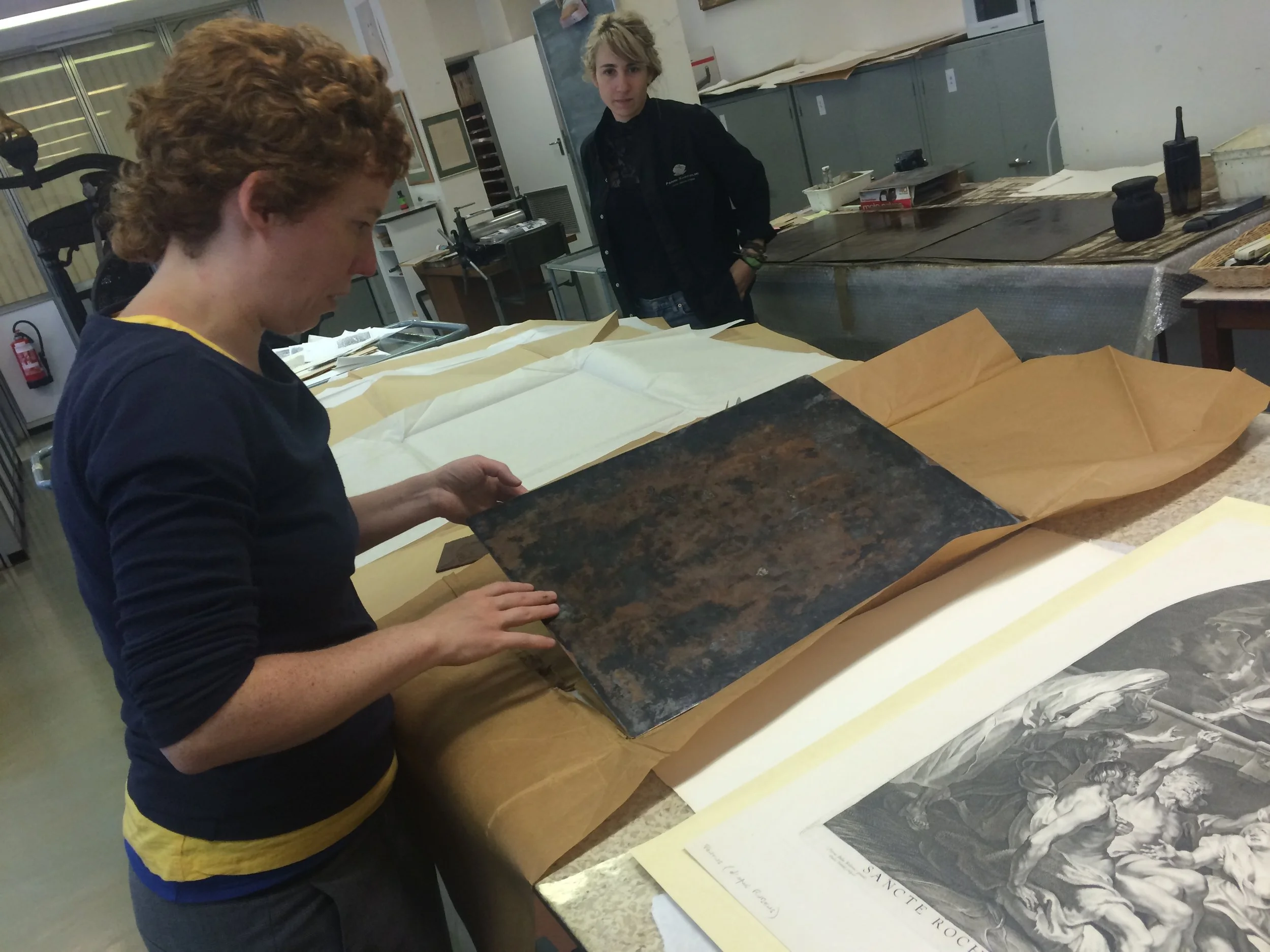



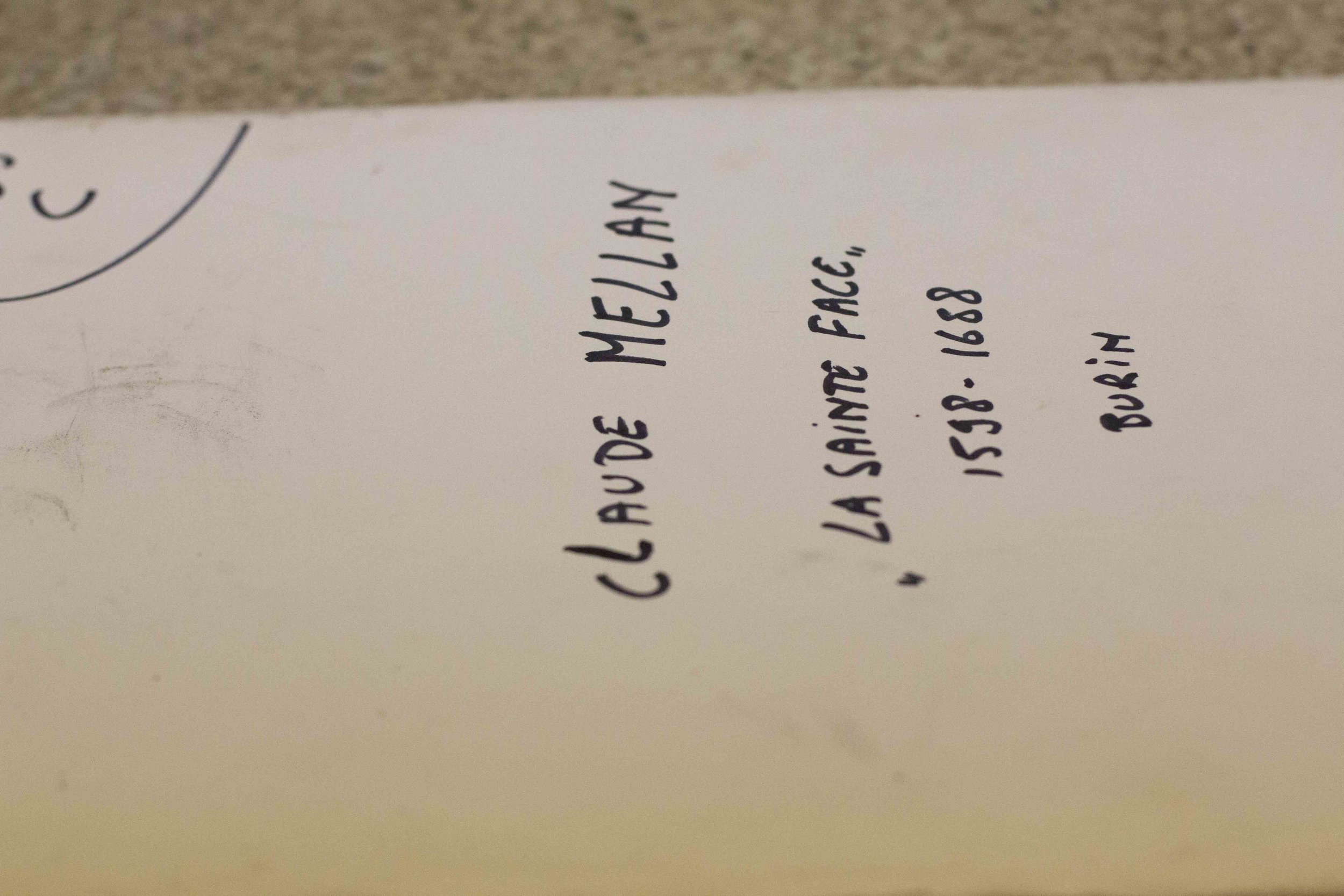
Chalcography department is an establishment in which large holdings of engraved plates are kept and which maintains large stocks from which impressions are printed as ordered by the public. There are three main national chalcographies: in Rome, founded by Clement XII in 1738, which includes most of the plates of the great 18th-century Italian printmaker Giovanni Battista Piranesi (1720–78); in Madrid, founded in 1789; and in Paris (Louvre), established in 1797.
The chalcography room has already been part of the collections since the establishment of the KBR in 1837 but became an autonomous service only in 1930. And this was stimulated by Mr Jules Destrée, whose wife, Marie Danse, was an engraver herself. The travelling exhibition of the Chalcographies from Rome, Paris and Madrid, which was on display in Belgium in 1928 served as the immediate reason for setting up the Chalcography department.
While the oldest plate kept in archives telling the history of engraving in Belgium and Europe dates from 1488. In the beginning, the collection included 2.000 engravings, but unfortunately, many of them were seriously damaged and were too fragile to print, so the library decided to expand the collection by acquiring the work from Belgian artists of that time as well as the collection compiled by a French engraver and publisher Pierre-Francois Basan. Today, the Chalcography is actively pursuing a policy to enlarge the collection of new plates by contemporary Belgian & international artists, through purchase and donations. The main purpose is the conservation of engraved plates and wide circulation of its production through its workshop and shop.
The promotion of this important heritage is mainly ensured by the sale of prints, produced in its studio and sold in its shop, both located in the lower floor of the former Palace of Charles de Lorraine.



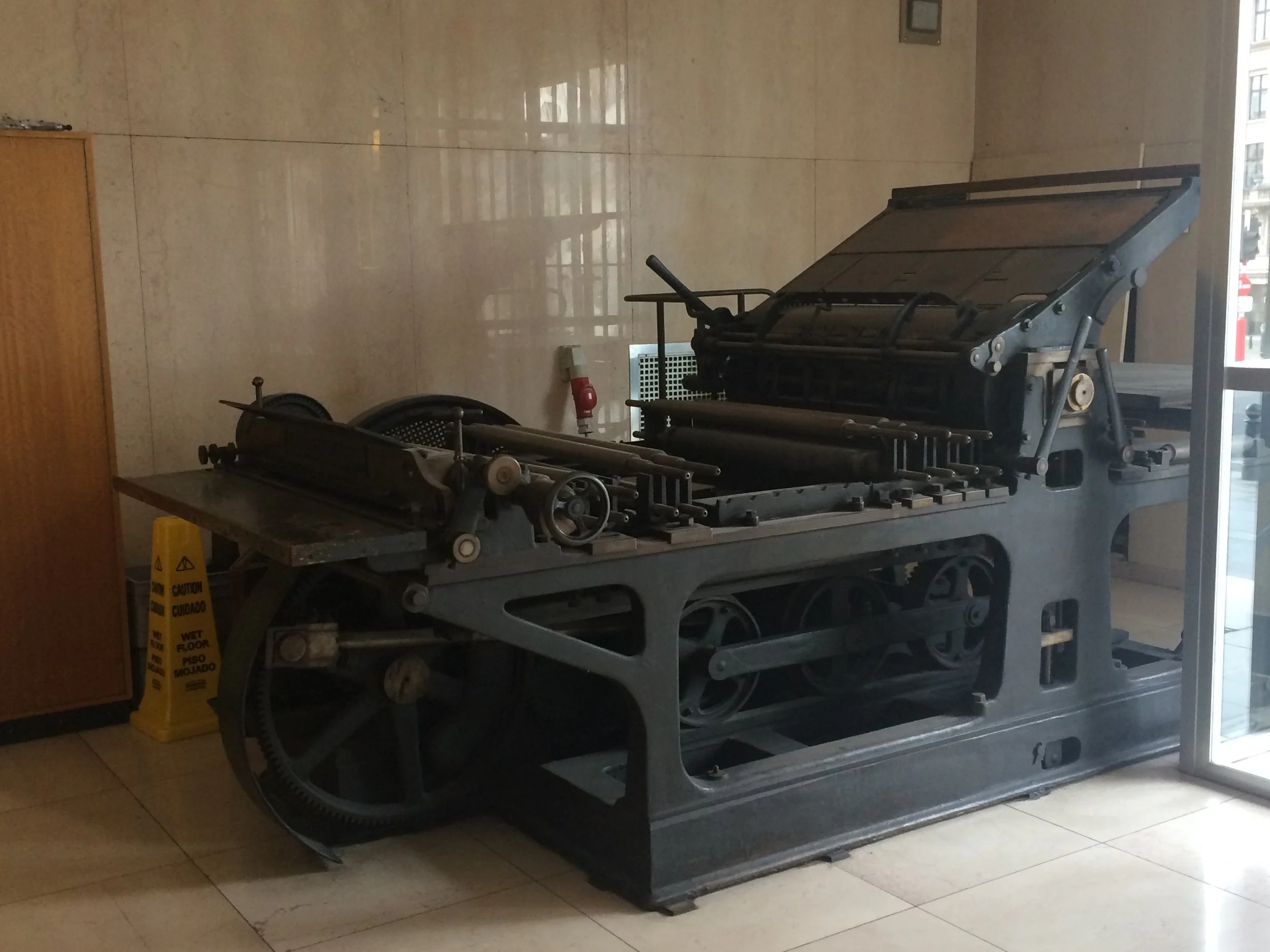
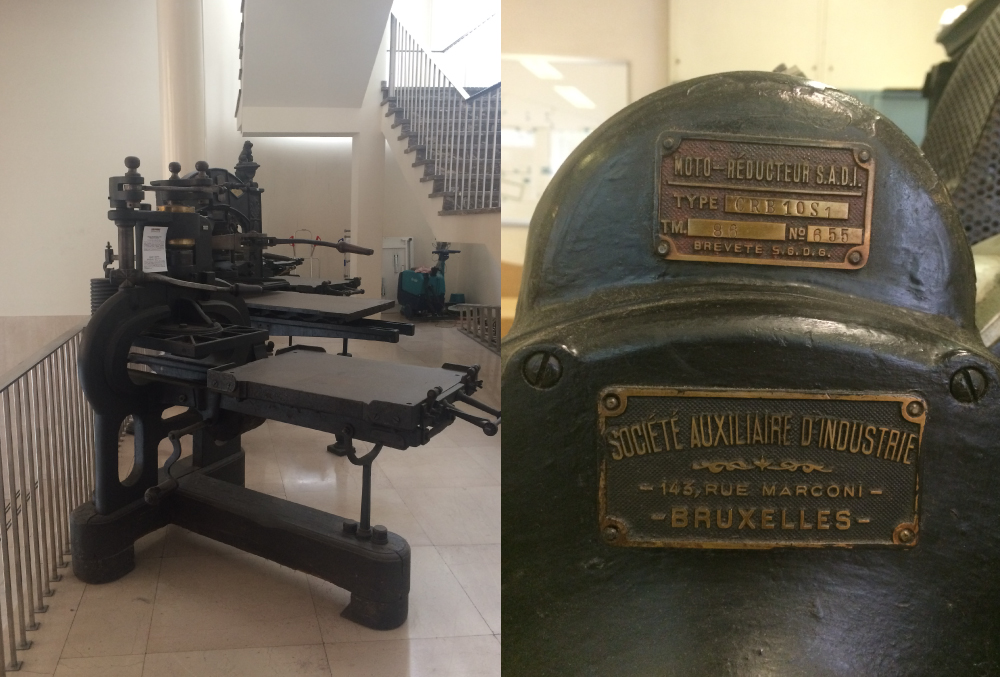

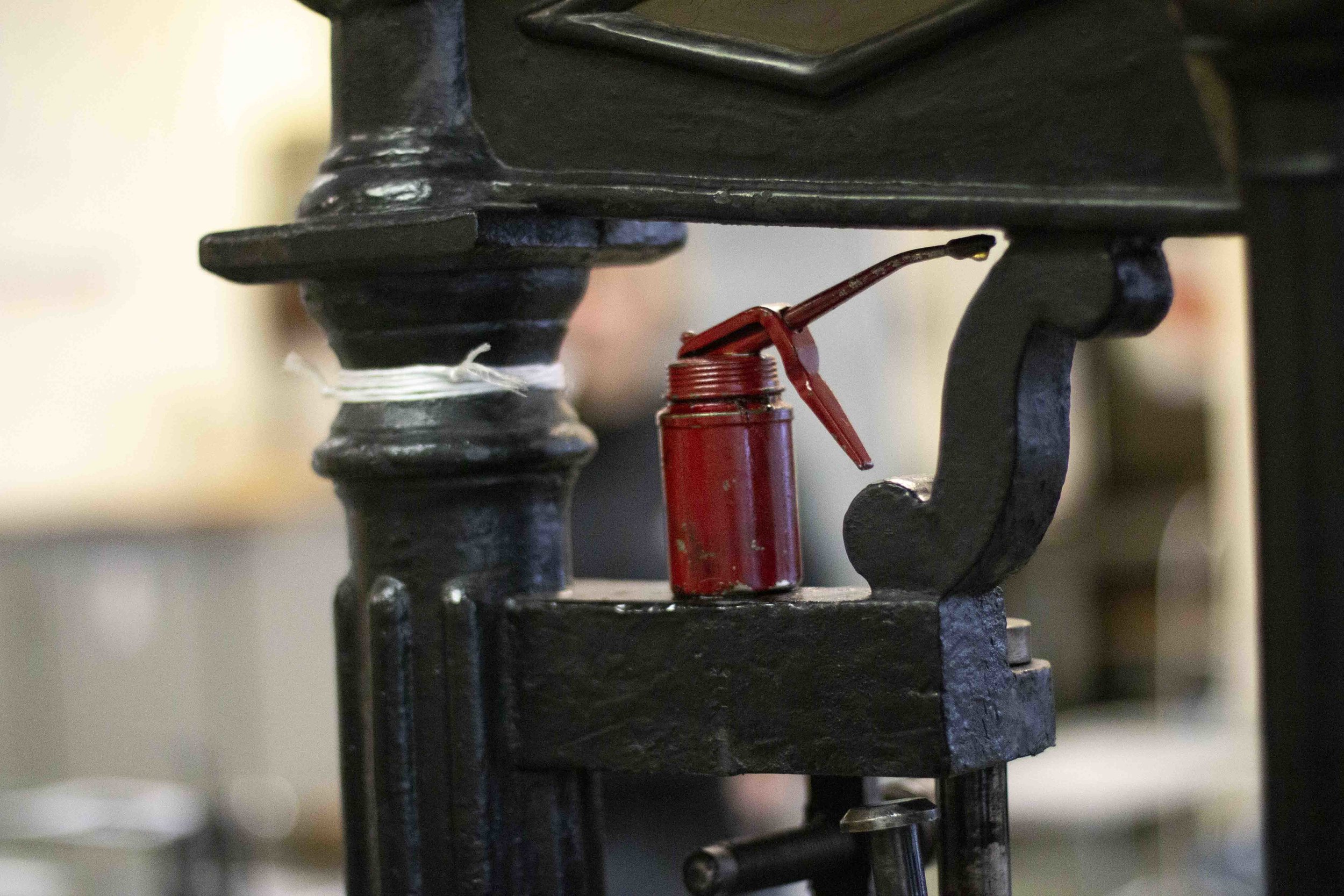
After entering the building, passing the security line and while waiting for Leen we've noticed various printing presses exhibited in the corridors of KBR. French imitation of Columbia press, as many presses made before 1830 mounted on the wooden block, Stanhope hand press from 1795, the printing presses from F. Rops, M. Elskamp and A. Curvers, as well as the cylinder press of the German government in Brussels, used during the First World War. We were told that this collection of printing presses belongs to The Printing Museum (Drukkerijmuseum) founded in 1975. It manages extensive documentation on the history of printing with the main focus on the evolution of the printing in Belgium in the 19th century.





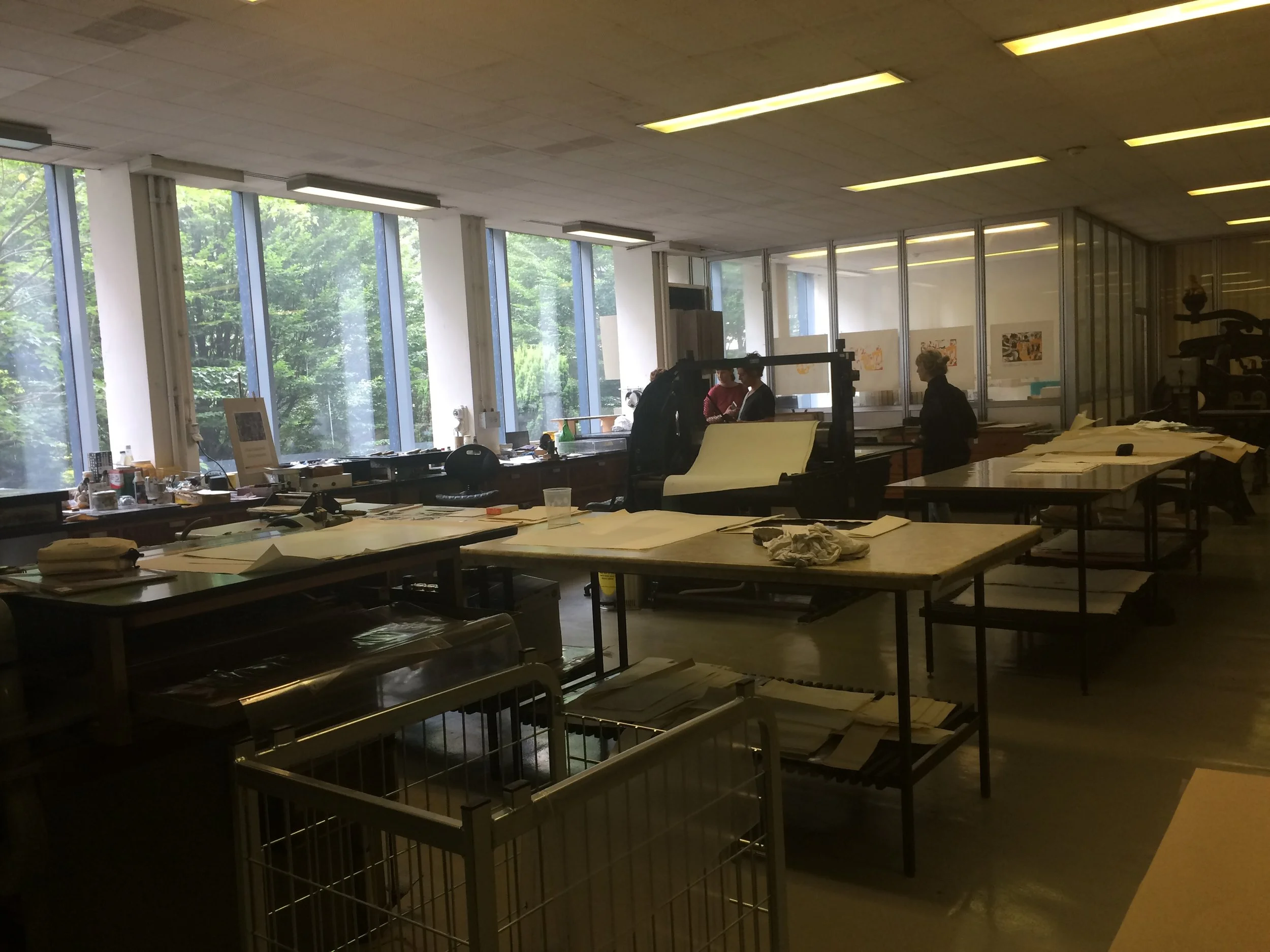

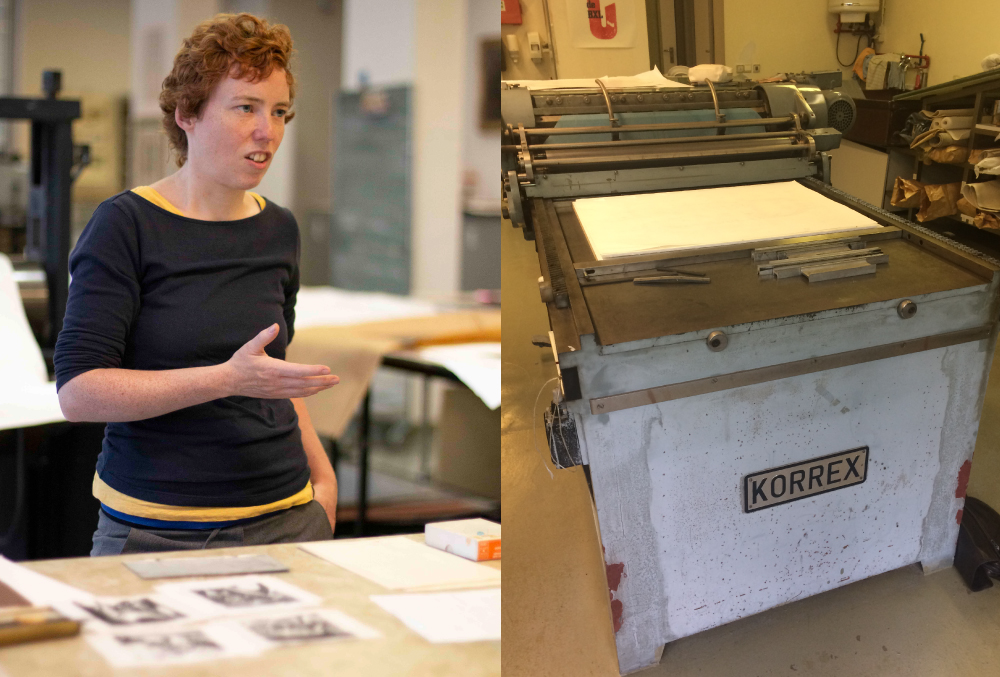
After meeting Leen and following her through the various underground corridors, as the building is being renovated at the moment, we entered a modest but spacious room with big windows filled with huge black leather maps full of prints placed on a counter, arranged by format and theme. Any of these prints can be yours as the Chalcography department produces original prints and reprints. The most popular images are off course the prints related to the city of Brussels. The prices are quite democratic and reasonable, from 25 to 100 euro for the black and white prints and from 50 to 200 for the colour ones, according to their size. What is exceptional about this place is the fact that they still produce prints on demand. So if you have a special interest in a particular image or just looking for an extraordinary gift you may pay a visit to Chalcography room in Brussels.
After browsing through prints bound in huge leather books, which you can hardly lift, we followed Leen into the actual printing room hidden away behind the glass windows. The spacious printing room houses various etching presses, book press and a Korrex Frankfurt.









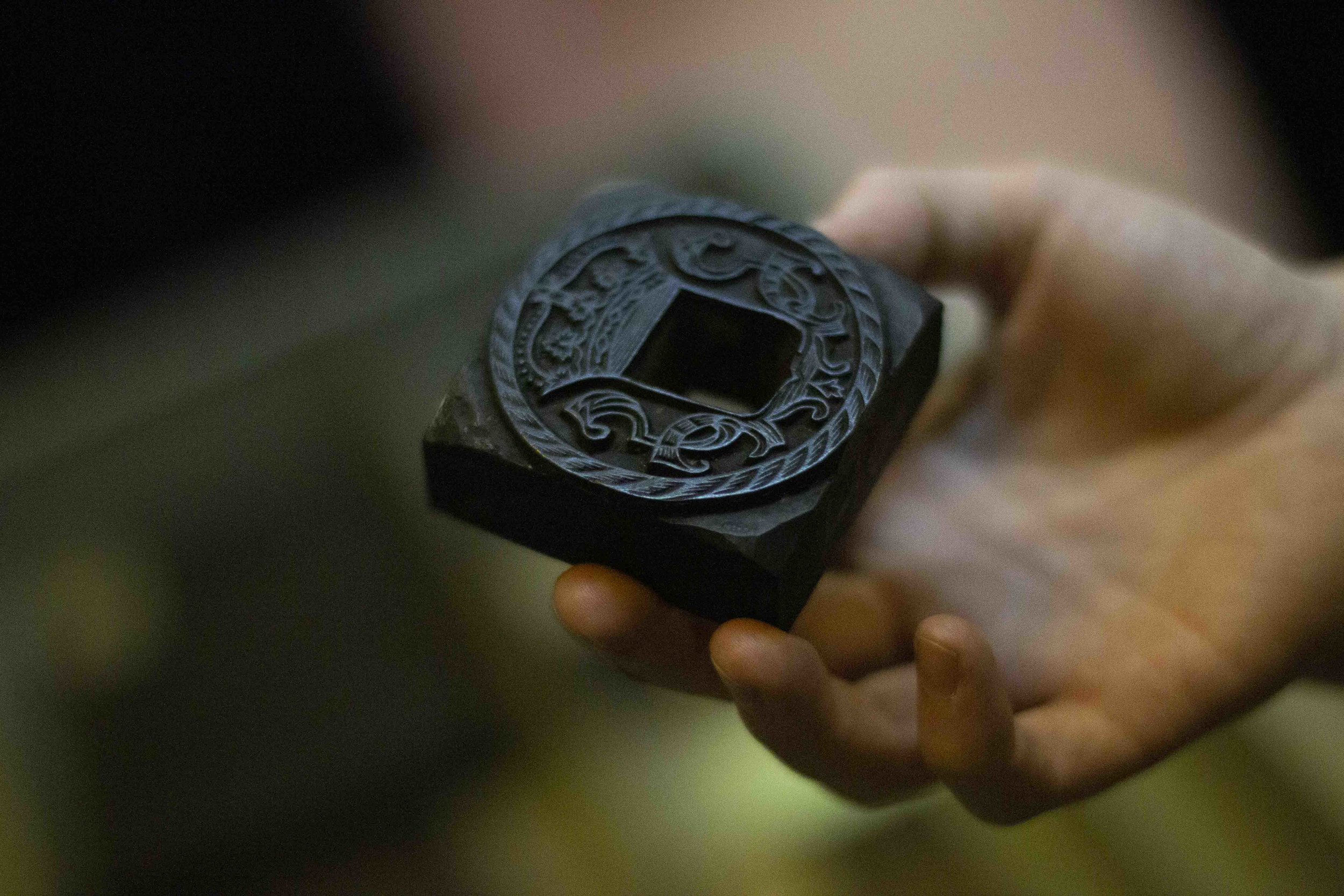



Leen demonstrated the working of various presses, showed her linocuts for the upcoming Bruegel exhibition, explained the process and showed a few exceptional copper plates from the collections as well as a few gems such as wood blocks (100 pieces) carved by Frans Masereel for one of his books, kept at the archive at the KBR.
It was a day full of inspiration. Thank you, Leen for your time!
KBR
Boulevard de l'Empereur 2
1000 Brussels
Monday to Friday: 9 am to 5 pm
website
Upcoming exhibition — The World of Bruegel in Black and White
From 15 October 2019 to 16 February 2020
The shop will be closed until 14 October 2019 due to major works for the upcoming exhibition in the KBR building. You can still order our publications via shop@kbr.be.


